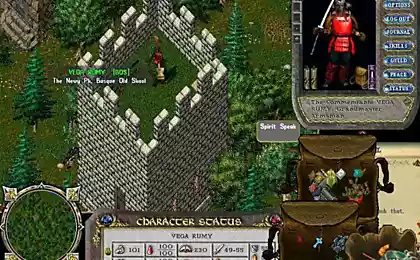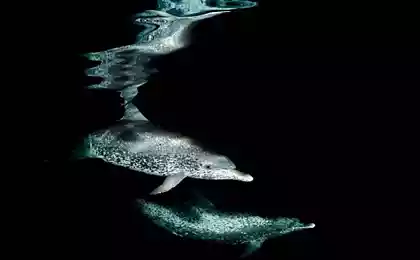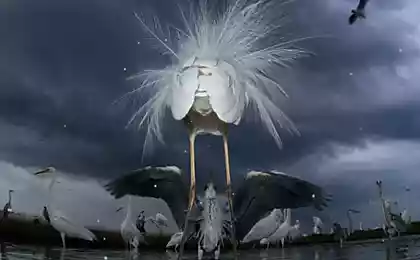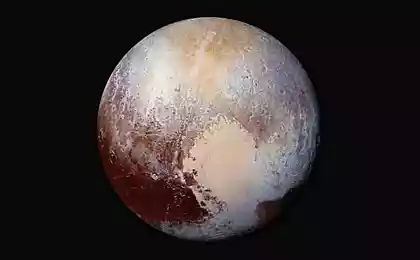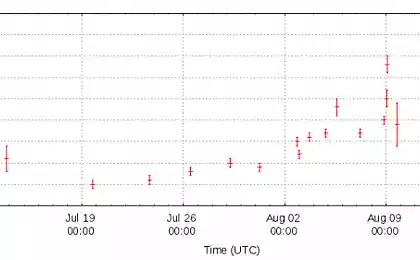964
The winners Best Astronomy Photos
Photo from the category of our solar system, made by Peter Ward (Australia) May 7, 2011. You can see the chromosphere, a thin layer of the solar atmosphere, because the photo was taken through a special filter that removes the red light emitted by hydrogen. The chromosphere consists of a gas heated to a temperature of 20,000 degrees Celsius. Dense clumps of cold gas look more like dark filaments on the disk of the sun or a red bump on the edges.
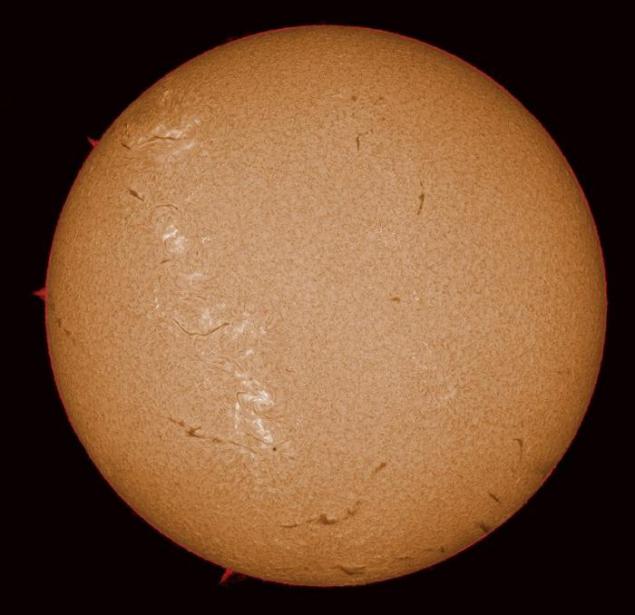
winner in our solar system, and the overall winner - Damien Peach photo of Jupiter, Io and Ganymede, September 2010. Jupiter shot with two out of 64 of its moons are visible on the surface of colored stripes and oval storms. It is also possible to examine the details of the satellites. Pictures of them made this collage were made on
Barbados, where the purity of the atmosphere allows the astronomical high-quality pictures.
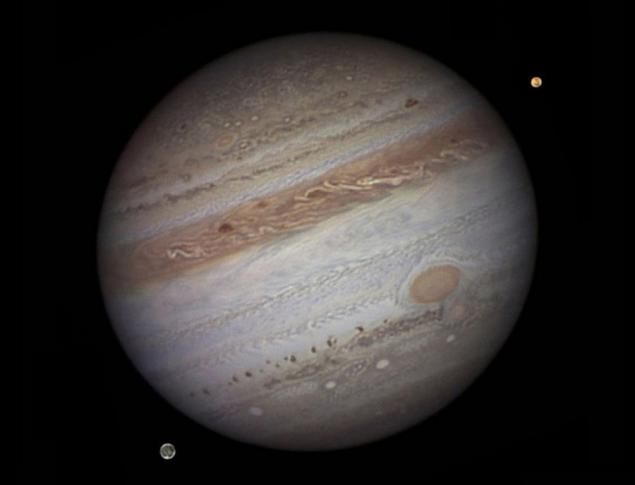
Second place in the category of our solar system took Paul Hayes (Australia). The photos were taken with an interval of 40 minutes and 29 March 2011 and show a large movement of the storm, called the Dragon Storm in Saturn's upper atmosphere. Saturn is famous for its sparkling ring of dust orbiting the planet's orbit.
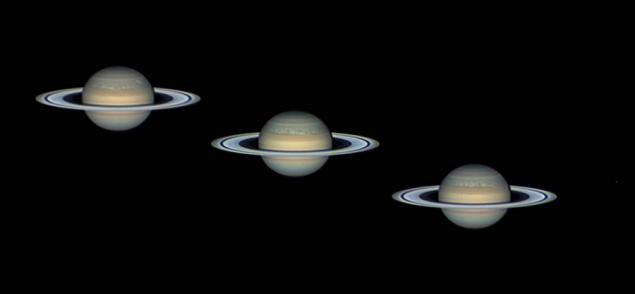
Snapshot Kaksete Dani (Spain) from the category of our solar system. ISS ishattl Endeavour crossed the solar disc 21 May 2011. It is also possible to distinguish between the elements of the solar photosphere: grainy texture which is the result of boiling point gas at a temperature of 6000 degrees Celsius and the melting point with a lower left of the ISS. Lowering
the temperature in this area due to the magnetic activity
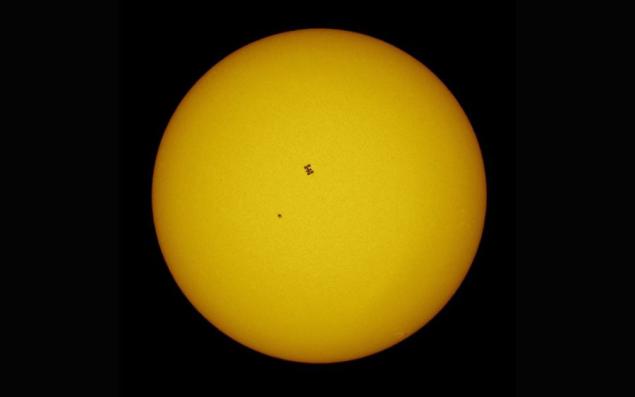
The picture of George Tarsoudisa (Greece) from the category of our solar system, made February 8, 2011. Petavius lunar crater is visible in the bottom right of the picture, almost 200 km wide and more than 3 km deep, with a central peak, which reaches a height of 2 kilometers from the crater floor. Many craters on the surface of the Moon was formed by collisions with asteroids, meteorites and comets over billions of years of its existence.
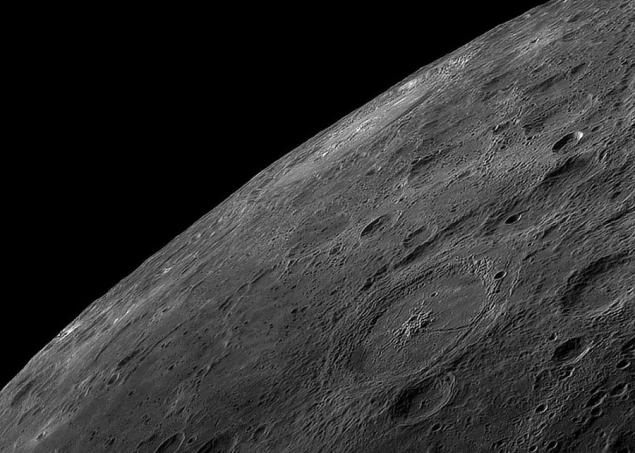
The winner in the category of Earth and space, shot TUNKA Tezelya (Turkey). The southern part of the Milky Way over the hills and the tops of trees. The picture was taken near the village of Oneroa in the Cook Islands, July 11, 2011. Milky Way galaxy is composed of hundreds of billions of stars, and has a disk shape. The southern part of the galaxy shines dust clouds that Australian aborigines were called "emu in the sky." Panorama images composed izdevyati delayed for 30 seconds, and the humidity created
the effect of diffusion and the special colors of the stars.
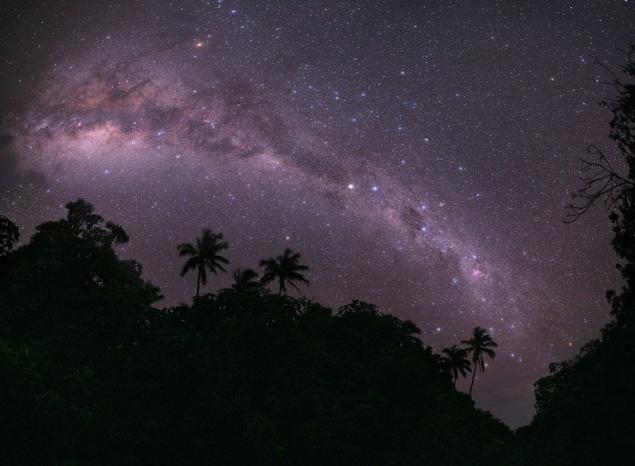
Second place in the category of Earth and space occupied Norwegian Ole Salomonsen sosnimkom Northern Lights over Lake near Hillesou in Norway marta2011 11 years. Radiance caused by the interaction of the Earth's atmosphere and the flow of particles from the Sun known as the solar wind. Earth's magnetic field pulls the particles to the poles, and because of this we can see colorful
light fabric.
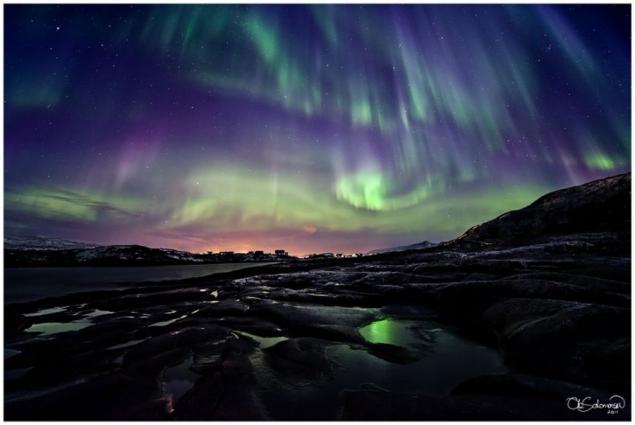
Category Earth and space. The picture of a meteor flying over Glastonbury Tor in Somerset, August 12, 2010, was made by Mike Kempsey (United Kingdom). During the annual passage of the Earth through the asteroid belt Perseids can be seen on 80 meteors per hour. However, it is difficult to photograph, and Mike used the continuous shooting to
to catch the frame.
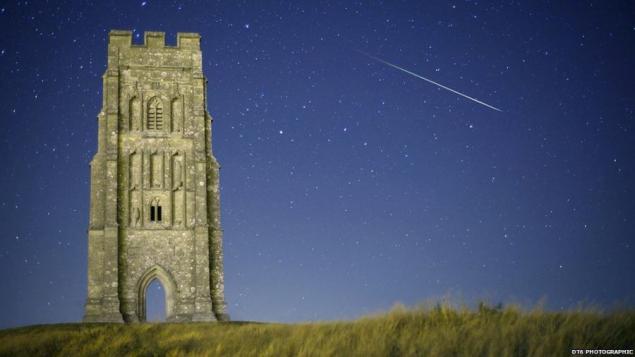
Second place in the category of deep space, Marco Lorenzi (Italy) with snimkomposledstvy supernova - the death of a star, which occurred 10,000 years ago, many times greater than the Sun in mass and size. Gas, is visible on the background of stars, covering an area of two hundred times greater than the disk of the full moon.
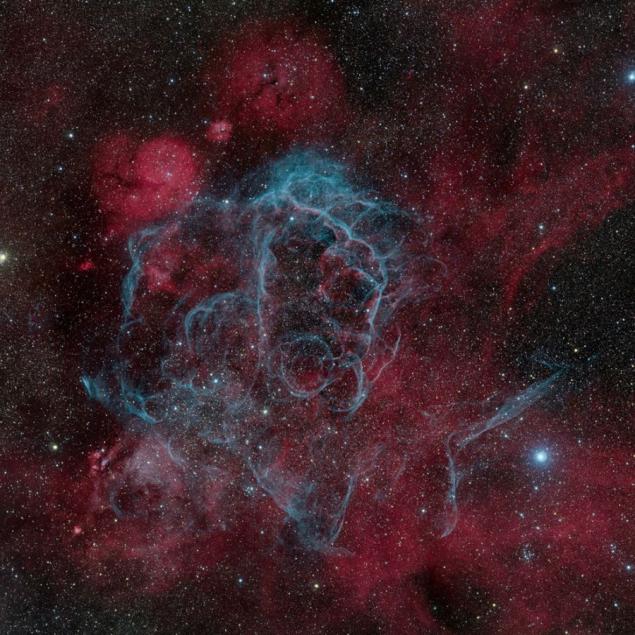
Third place in the category of deep space occupied by Edward Henry (USA) photo group of spiral galaxies Leo Trio, located at a distance of 35 million light-years, made 4 April 2011. These galaxies like our own Milky Way, they have billions of stars and gas tails, where new stars are formed. The galaxy to the left is about the same as we see our own galaxy from Earth.
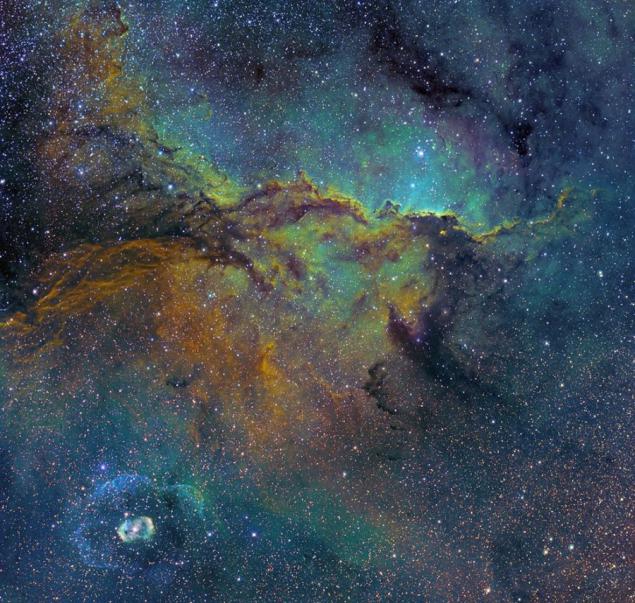
In the picture from the category of deep space, Rogelio Bernal Andreo made (USA), Orion is visible. Orion stands out against the background of faint stars, dust and gas that are not visible to the naked eye. Orion's Belt stretches from left to right, and below it is a cloud of gas in which new stars are formed. Slow shutter speed, and special filters are allowed to photograph the hidden beauty of the familiar constellations.
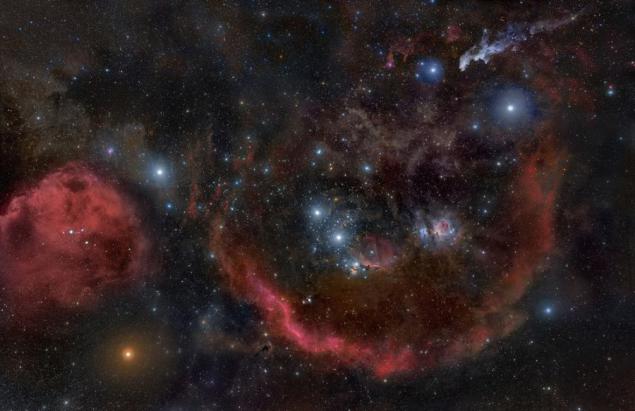
Winner in the category People and Space. Stargazing - Self Jeffrey Sullivan (USA). Silhouette of the photographer is visible on the top of a hill in the Sierra Nevada, and over which stretches the Milky Way with billions of stars. Our star is approximately two-thirds of the distance from the center to the edge of the galaxy, and we see it as a bright streak in the sky.
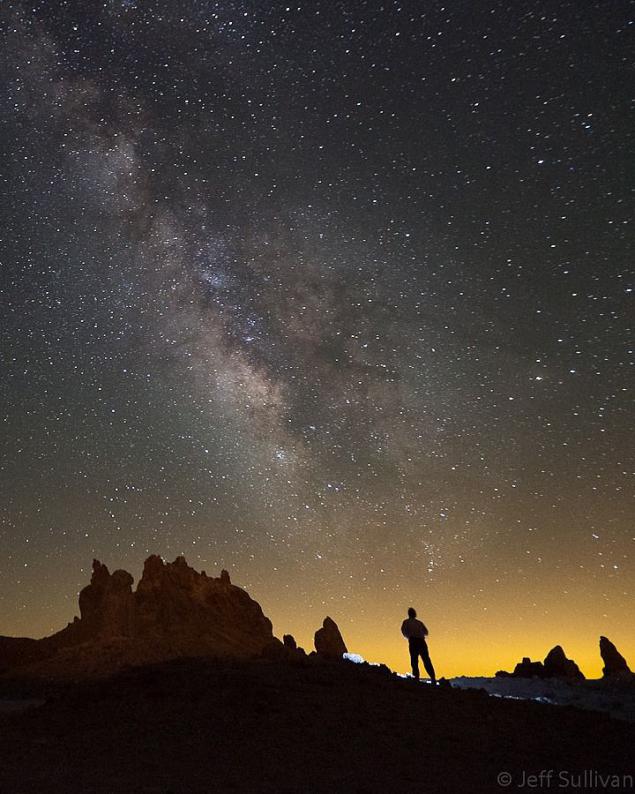
The winner in the category of Young Photographer astronomer - Jatin Premji, India (15) years with image of a lunar eclipse on 15 June 2011. The moon is red because it is illuminated by sunlight passed through the filter of the earth's atmosphere. The photographer was able to capture the event of one second: the emergence of the stars from the horizon of the moon.
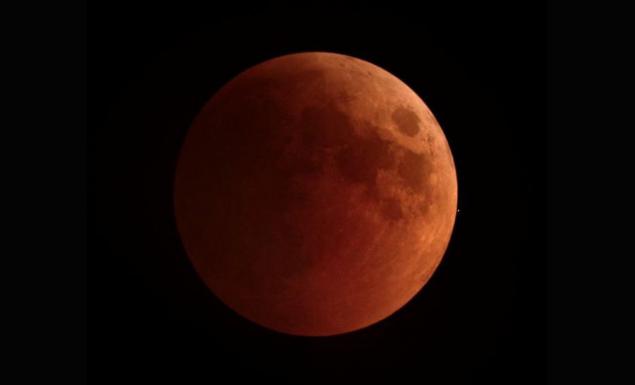
Second place in the category of Young Photographer astronomer took Nicole Sullivan (USA, 15 years). Stars of Sierra Nevadaa June 30, 2011, taken at slow shutter speeds, circling around the North Star. The effect is created by the Earth's rotation around its axis.
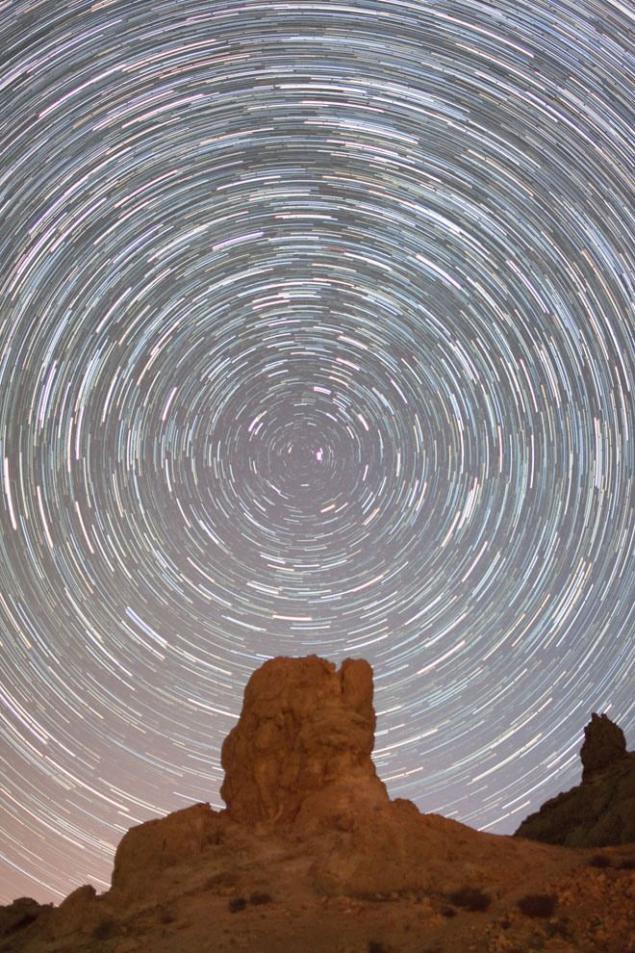
The picture of the moon Filmana Peter Petersen (United Kingdom, 15 years) from the category of Young Photographer astronomer. Sickle Moon was shot March 9, 2011. Like Earth, the moon is always half-illuminated by the sun. The position of the Moon, the Earth and the Sun relative to each other determines how much of the illuminated region of the moon we can see.
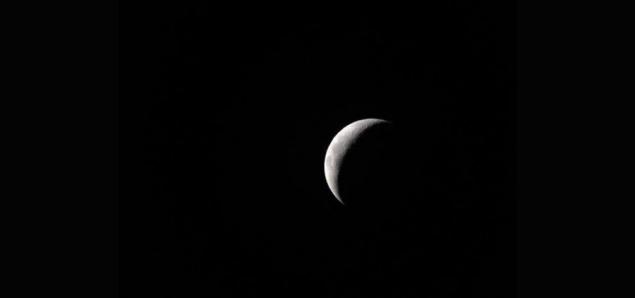
Photo of Tom Chitsona Young Photographer category astronomer. Snapshot lunyv first quarter made July 8, 2011, and on the surface of visible craters and mountain ranges near the terminator (the boundary of day and night). Temnyeoblasti - "sea" on the surface of the moon, filled with solidified lava billions of years ago. Young photographer took this picture by aligning obektivkamery eyepiece of the telescope.
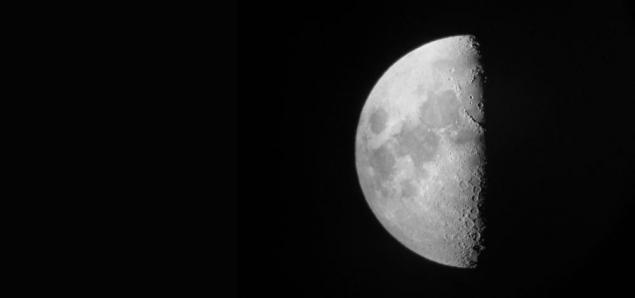
Photos of the category Best Newcomer. Harley Grady (USA) took the zodiacal light in the night sky above the deserted barn in Comanche, Texas. The zodiacal light - a phenomenon noticeable only in a very dark sky, resulting from the reflection of sunlight by dust in the solar system. Capture it - a great achievement for the novice astrophotographer. Also in the picture on the left shows two satellite
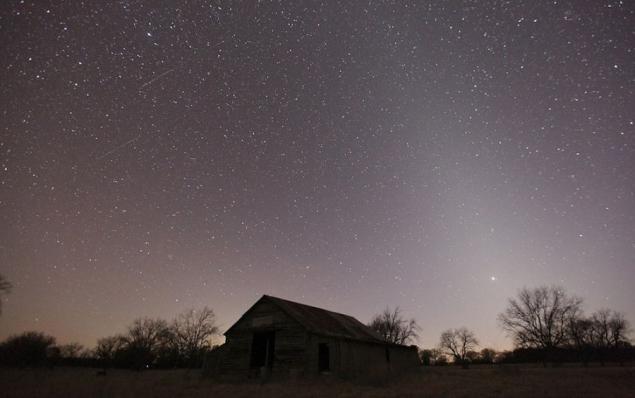
The winner in the category of robotic telescopes. Snapshot Marco Lorenzi (Italy), where you can see three distant galaxies (among them two elliptical NGC474 and NGC467) in the constellation Pisces. In the upper left portion of the image from an elliptical galaxy can be seen dull branch. The form of such galaxies may be due to the interaction with the neighboring spiral galaxies that affect the orbit of the outermost stars.
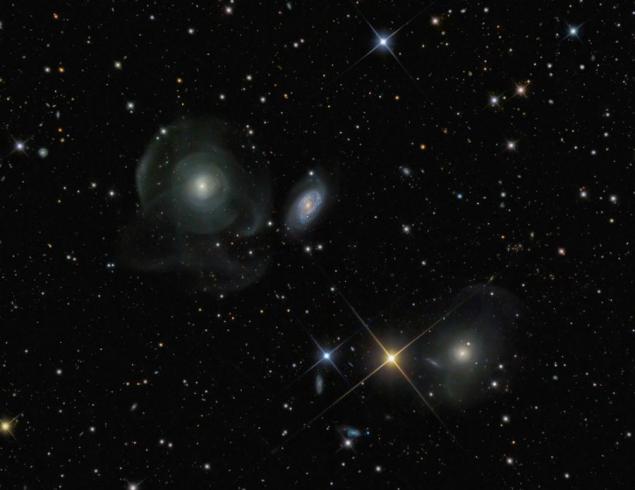
Snapshot Yorvara Utley Porgerissona Iceland, nature of land and KOSMOS.Severnoe glow creates a picturesque backdrop for the eruption of the volcano Eyyafyallayokull. The dark cloud of ash can be seen to the left of the photograph, while hot lava flows from the crater of the volcano. In spring 2010, this eruption created serious obstacles to the Railways.
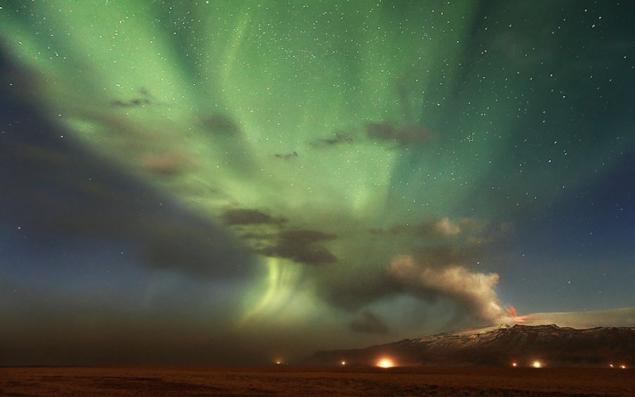

winner in our solar system, and the overall winner - Damien Peach photo of Jupiter, Io and Ganymede, September 2010. Jupiter shot with two out of 64 of its moons are visible on the surface of colored stripes and oval storms. It is also possible to examine the details of the satellites. Pictures of them made this collage were made on
Barbados, where the purity of the atmosphere allows the astronomical high-quality pictures.

Second place in the category of our solar system took Paul Hayes (Australia). The photos were taken with an interval of 40 minutes and 29 March 2011 and show a large movement of the storm, called the Dragon Storm in Saturn's upper atmosphere. Saturn is famous for its sparkling ring of dust orbiting the planet's orbit.

Snapshot Kaksete Dani (Spain) from the category of our solar system. ISS ishattl Endeavour crossed the solar disc 21 May 2011. It is also possible to distinguish between the elements of the solar photosphere: grainy texture which is the result of boiling point gas at a temperature of 6000 degrees Celsius and the melting point with a lower left of the ISS. Lowering
the temperature in this area due to the magnetic activity

The picture of George Tarsoudisa (Greece) from the category of our solar system, made February 8, 2011. Petavius lunar crater is visible in the bottom right of the picture, almost 200 km wide and more than 3 km deep, with a central peak, which reaches a height of 2 kilometers from the crater floor. Many craters on the surface of the Moon was formed by collisions with asteroids, meteorites and comets over billions of years of its existence.

The winner in the category of Earth and space, shot TUNKA Tezelya (Turkey). The southern part of the Milky Way over the hills and the tops of trees. The picture was taken near the village of Oneroa in the Cook Islands, July 11, 2011. Milky Way galaxy is composed of hundreds of billions of stars, and has a disk shape. The southern part of the galaxy shines dust clouds that Australian aborigines were called "emu in the sky." Panorama images composed izdevyati delayed for 30 seconds, and the humidity created
the effect of diffusion and the special colors of the stars.

Second place in the category of Earth and space occupied Norwegian Ole Salomonsen sosnimkom Northern Lights over Lake near Hillesou in Norway marta2011 11 years. Radiance caused by the interaction of the Earth's atmosphere and the flow of particles from the Sun known as the solar wind. Earth's magnetic field pulls the particles to the poles, and because of this we can see colorful
light fabric.

Category Earth and space. The picture of a meteor flying over Glastonbury Tor in Somerset, August 12, 2010, was made by Mike Kempsey (United Kingdom). During the annual passage of the Earth through the asteroid belt Perseids can be seen on 80 meteors per hour. However, it is difficult to photograph, and Mike used the continuous shooting to
to catch the frame.

Second place in the category of deep space, Marco Lorenzi (Italy) with snimkomposledstvy supernova - the death of a star, which occurred 10,000 years ago, many times greater than the Sun in mass and size. Gas, is visible on the background of stars, covering an area of two hundred times greater than the disk of the full moon.

Third place in the category of deep space occupied by Edward Henry (USA) photo group of spiral galaxies Leo Trio, located at a distance of 35 million light-years, made 4 April 2011. These galaxies like our own Milky Way, they have billions of stars and gas tails, where new stars are formed. The galaxy to the left is about the same as we see our own galaxy from Earth.

In the picture from the category of deep space, Rogelio Bernal Andreo made (USA), Orion is visible. Orion stands out against the background of faint stars, dust and gas that are not visible to the naked eye. Orion's Belt stretches from left to right, and below it is a cloud of gas in which new stars are formed. Slow shutter speed, and special filters are allowed to photograph the hidden beauty of the familiar constellations.

Winner in the category People and Space. Stargazing - Self Jeffrey Sullivan (USA). Silhouette of the photographer is visible on the top of a hill in the Sierra Nevada, and over which stretches the Milky Way with billions of stars. Our star is approximately two-thirds of the distance from the center to the edge of the galaxy, and we see it as a bright streak in the sky.

The winner in the category of Young Photographer astronomer - Jatin Premji, India (15) years with image of a lunar eclipse on 15 June 2011. The moon is red because it is illuminated by sunlight passed through the filter of the earth's atmosphere. The photographer was able to capture the event of one second: the emergence of the stars from the horizon of the moon.

Second place in the category of Young Photographer astronomer took Nicole Sullivan (USA, 15 years). Stars of Sierra Nevadaa June 30, 2011, taken at slow shutter speeds, circling around the North Star. The effect is created by the Earth's rotation around its axis.

The picture of the moon Filmana Peter Petersen (United Kingdom, 15 years) from the category of Young Photographer astronomer. Sickle Moon was shot March 9, 2011. Like Earth, the moon is always half-illuminated by the sun. The position of the Moon, the Earth and the Sun relative to each other determines how much of the illuminated region of the moon we can see.

Photo of Tom Chitsona Young Photographer category astronomer. Snapshot lunyv first quarter made July 8, 2011, and on the surface of visible craters and mountain ranges near the terminator (the boundary of day and night). Temnyeoblasti - "sea" on the surface of the moon, filled with solidified lava billions of years ago. Young photographer took this picture by aligning obektivkamery eyepiece of the telescope.

Photos of the category Best Newcomer. Harley Grady (USA) took the zodiacal light in the night sky above the deserted barn in Comanche, Texas. The zodiacal light - a phenomenon noticeable only in a very dark sky, resulting from the reflection of sunlight by dust in the solar system. Capture it - a great achievement for the novice astrophotographer. Also in the picture on the left shows two satellite

The winner in the category of robotic telescopes. Snapshot Marco Lorenzi (Italy), where you can see three distant galaxies (among them two elliptical NGC474 and NGC467) in the constellation Pisces. In the upper left portion of the image from an elliptical galaxy can be seen dull branch. The form of such galaxies may be due to the interaction with the neighboring spiral galaxies that affect the orbit of the outermost stars.

Snapshot Yorvara Utley Porgerissona Iceland, nature of land and KOSMOS.Severnoe glow creates a picturesque backdrop for the eruption of the volcano Eyyafyallayokull. The dark cloud of ash can be seen to the left of the photograph, while hot lava flows from the crater of the volcano. In spring 2010, this eruption created serious obstacles to the Railways.


